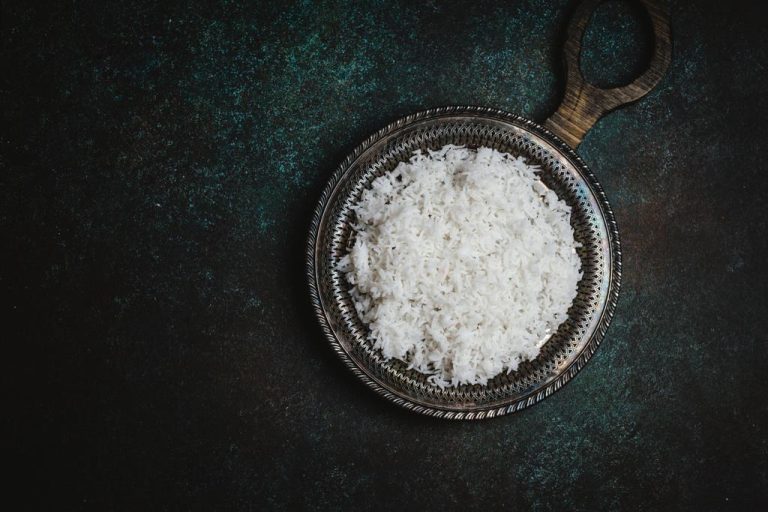Gluten-free grain is a good alternative to wheat, spelt and the like if you suffer from gluten intolerance. In addition, these grains bring more variety to your diet. We introduce you to the seven most important ones.

Millet: Gluten-free grain from the region
The name of this traditional grain comes from the old Germanic and means something like “saturation” or “nutrition”. Millet rightly bears this name: It provides you with a balanced combination of complex carbohydrates and plant-based protein
Millet is also rich in B vitamins, iron, zinc and magnesium.
Amaranth: Gluten-free grain from the Andes
Even the Inca and Aztecs valued the valuable ingredients of amaranth and used it as a healthy and filling staple food. Today, the gluten-free grain has also become a popular food in Europe.
With a protein content of around 15 percent, amaranth is considered a very protein-rich grain. In addition, it provides you with complex carbohydrates and fiber and contains significantly more unsaturated fatty acids than other grains. The gluten-free grain is also particularly well-known for its high iron content. Other minerals that amaranth contains in relatively high amounts are magnesium, calcium, zinc, potassium and phosphorus.
Buckwheat: Gluten-free grain against vascular diseases
Buckwheat also primarily provides you with complex carbohydrates, fiber and protein. In addition, the gluten-free grain scores particularly well with its high magnesium content. It also contains other minerals such as potassium, calcium, phosphorus, as well as B vitamins and vitamin E.
Due to the rutin it contains, a secondary plant substance, buckwheat is said to promote blood circulation and protect the blood vessels. In order to benefit from this effect, you need the buckwheat herb. You can use it to make tea, for example, and drink it several times a day.
Oatmeal: The breakfast classic
Oatmeal consists mostly of complex carbohydrates, but also provides a considerable amount of protein with 12 to 13 grams of protein. Like amaranth, oatmeal is one of the higher-fat grains. They primarily contain unsaturated fatty acids.
Oatmeal also provides you with a considerable amount of fiber, many B vitamins, as well as zinc, iron, manganese and magnesium. In contrast to other cereals, oatmeal has a high beta-glucan content. This is a soluble dietary fiber that has a regulating effect on cholesterol levels. In type 2 diabetics, beta-glucan also lowers blood sugar levels.
Quinoa: the superfood of the Incas
Like amaranth, quinoa was used as a staple food by the Incas. The gluten-free grain provides the body with all macronutrients in a balanced ratio. In addition to complex carbohydrates, quinoa also contains unsaturated fatty acids and vegetable protein.
What is special about quinoa is its complete amino acid profile. Along with soy, it is one of the only plant foods that provide you with all of the amino acids. In addition, quinoa also contains important minerals such as magnesium, iron, potassium, calcium and manganese.
Corn: The slightly different gluten-free grain
Because of its taste and shape, corn differs significantly from other gluten-free grains and is therefore often incorrectly referred to as a vegetable. In terms of its nutritional values, however, it is not dissimilar to other grains: corn also provides you with many carbohydrates and a moderate amount of protein and some fat.
In contrast to other cereals, however, the carbohydrates in corn consist mainly of glucose, fructose and sucrose. These ensure the sweet taste of the yellow grain. In addition, corn contains plenty of dietary fiber as well as minerals and vitamins: it is particularly rich in vitamin A, some B vitamins and vitamin E. It also provides iron, zinc and potassium in moderate amounts.
Rice: The classic from Asia
Rice is one of the classic gluten-free cereals. The nutritional values of the many different types of rice differ greatly in some cases. However, what applies to everyone: Compared to other cereals, rice contains a relatively large amount of carbohydrates, almost no fat and less protein. It also provides significantly less dietary fiber.
If you want to take in as many nutrients as possible, it is best to use whole grain rice. This not only contains a little more fiber and protein, but is also richer in minerals and vitamins, especially B vitamins, iron, magnesium, calcium, potassium and phosphorus.

